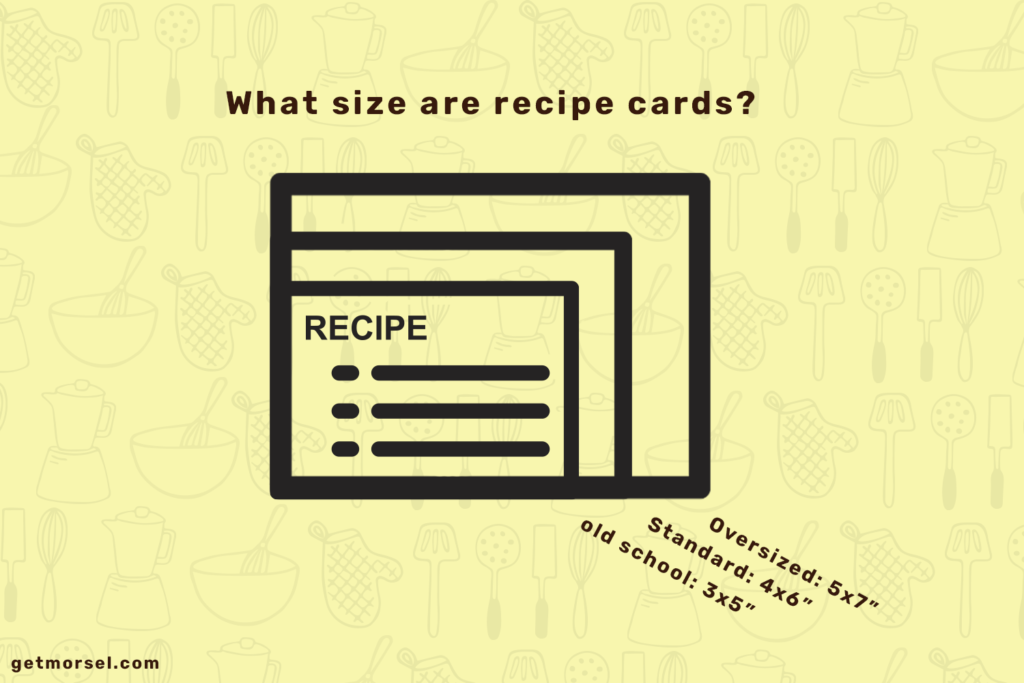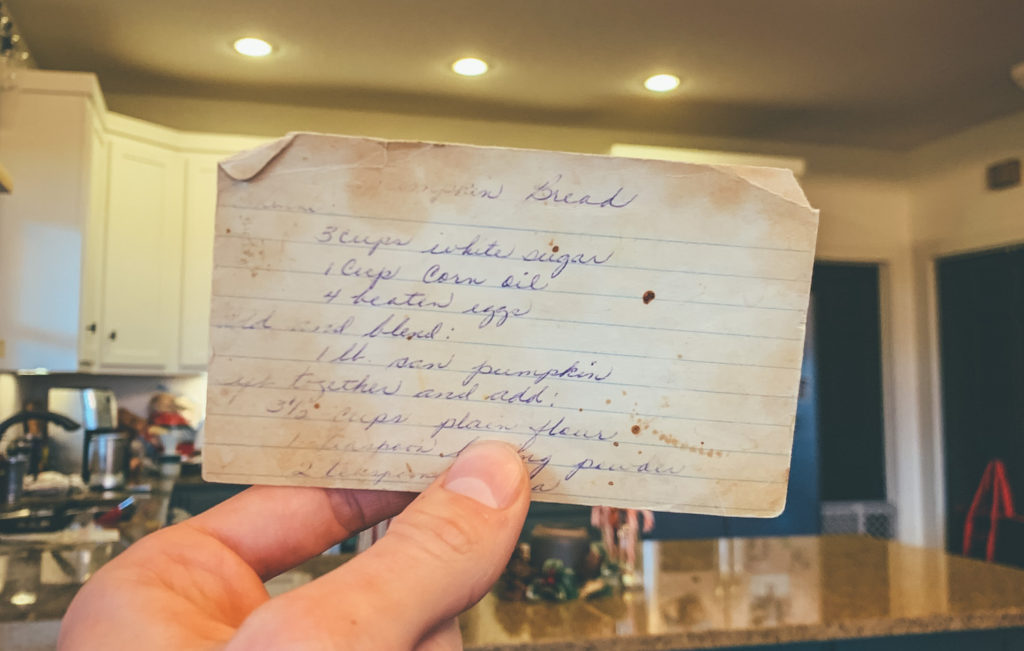What Size Are Recipe Cards?

Recipe cards are the perfect way to keep track of your favorite dishes. The best part is that they are easy to store and are a fun and easy way to share your favorite family recipes with your extended family and friends.
What Size are Recipe Cards?

Although you may have seen recipe cards come in a couple of various sizes, they typically are found in three sizes: 3×5” inches, which is the old-fashioned style; 4×6” inches for the standard style; and 5×7” inches for the oversized style.
Old Fashioned 3×5” Recipe Card

The 3×5” card is the standard recipe card dimension that has been popular for decades in past. It is also the most commonly used index card in North America and the UK that is 3 by 5 inches (or 76.2 by 127.0 mm). This size was a perfect fit for the old recipe boxes that were designed for America’s smaller kitchens. Now that the kitchens are getting much bigger thanks to the dozens of HGTV home shows out there — with a lot more storage space, the recipe boxes and, of course the recipe cards are getting bigger too.
Standard 4×6” Recipe Card
These days, a standard recipe card will be 4×6” (101.6 by 152.4 mm). Most recipe cards are made in this size now as it is a lot easier to handle while storing in binders and recipe boxes and it’s easier to read. Plus, they easily fit in a standard kitchen. Standard recipe cards are a full 60% bigger than the earlier 3×5” recipe cards giving you even more space to write notes to your recipes.
Oversized 5×7” Recipe Cards
Some chefs have expanded to the 5×7” recipe card, which is also known as an “oversized”. A 5×7” recipe card is a whopping 133% larger than the original 3×5” card. Talk about room to write!
Some people may prefer this card, but, it is pretty tough to store as it is well enormous and will not fit in the usual recipe boxes everyone has at home. Use cation if you go this big.
How to Design and Print Personalized Recipe Cards
Now that we know more about recipe card sizes, let’s get into how to design recipe cards. Recipe cards are an integral part of your community’s culture as they are passed down from generation to generation. If you want to spend the time to make your own personalized recipe cards, then you can do so with the help of Canva.
There are tons of pre-designed templates available on Canva which you can take inspiration from or even use as is. Feel free to change the fonts, texts, images to make the designs feel more like your own. Have fun with it!
After customizing your card, you can download high-quality PDFs and print them at home. You can then print your recipes on regular paper, but we recommend using nice card stock. Then all you need to do is cut out the recipes and tape or paste them to the cards. If your printer has an option to print on index cards, you can print directly onto the cards too. Voila! It is ready to be printed and shared with your loved ones.
Order Professionally Printed Personalized Recipe Cards
Maybe designing, printing, cutting, and pasting isn’t your idea of a weekend activity. Have no fear, if you’d prefer to upload all your delicious family recipes easily to our online family cookbook software, we can take care of the rest for you. Once all your recipes are online, you can easily order a recipe box with personalized recipe cards through us and we will ship it straight to your doorstep. How’s that for the next level, easy!
Frequently Asked Questions
What is a standard recipe card?
A standard recipe card is typically 3×5” and includes the name of the dish, ingredients of the dish, method of cooking, estimated yield, step-by-step instructions, historical notes, and more details if needed.
What should a recipe include?
A recipe can be as elaborate as you want, but, at minimum, it should include the following details:
- the name of the dish.
- a list of ingredients with the exact quantity of each ingredient.
- a step-by-step description of how the dish should be prepared and completed
- Historical notes about where the recipe was used, what holidays etc…
- Quantity of yield (ie. how much it makes)

Ian Hoyt is a co-founder of Morsel – a family recipe cookbook software. When he isn’t working on building the best recipe app for your family Ian can be found hiking in the mountains of North Carolina, flying airplanes, or of course in the kitchen perfecting his beloved scone recipe.
